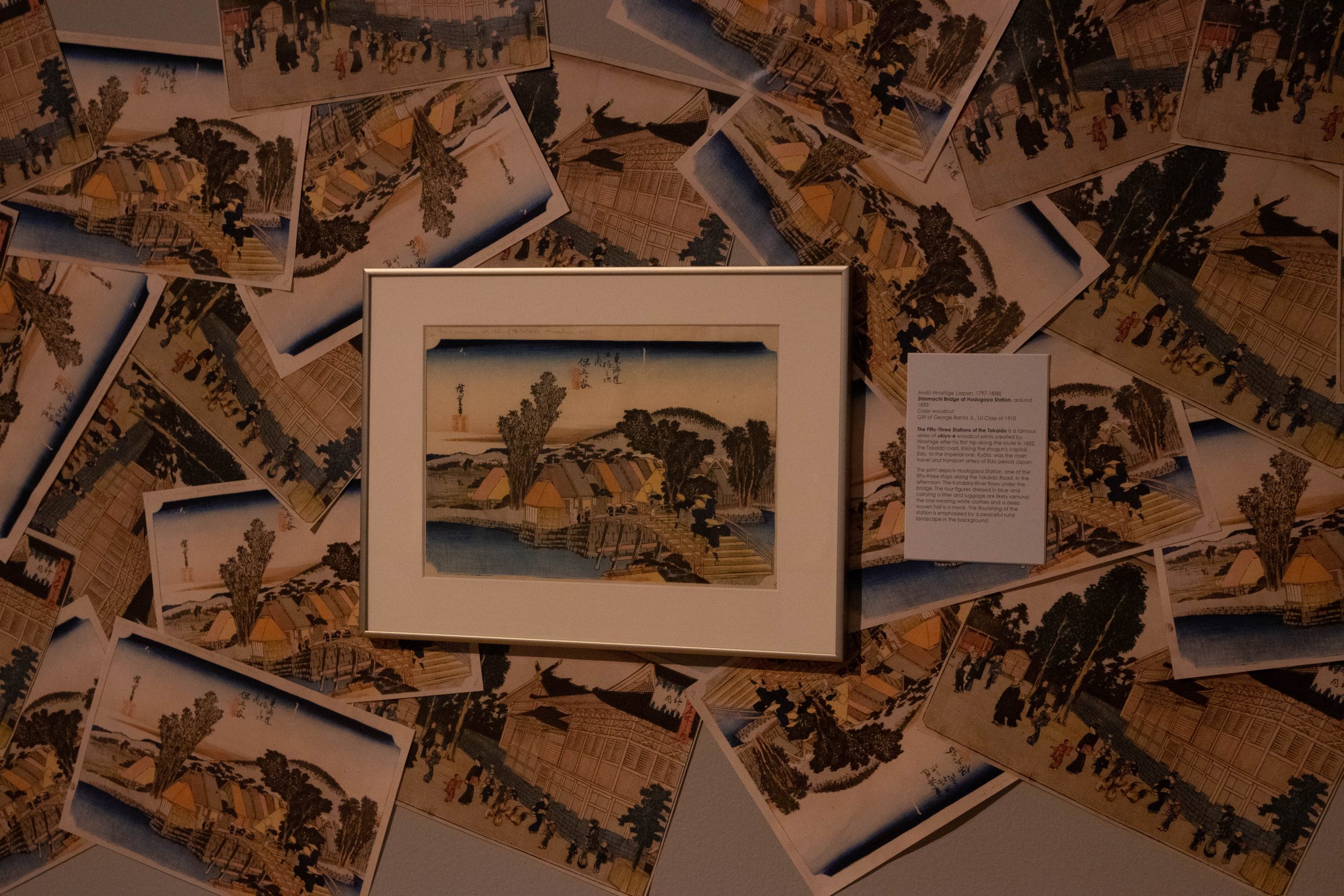In the search for East Asian art, one might not look towards Appleton, but a recent show at Lawrence University challenges this assumption. Indeed, the “Invisible ‘Orient’” exhibit of the Wriston Art Center’s Leech Gallery challenges many presuppositions, profoundly questioning the context in which we view artwork from different cultures. The exhibit, which remains open until May 12, was curated and organized by Jin Han, a fourth-year major in East Asian studies and psychology.
Upon entering, three prongs surround the viewer: a glimpse of 19th-century Japan on the right, 18th-century China on the left and 14th-century Buddhism straight ahead. Yet the collision of artwork from distinct cultures is intentional. It reflects the common Western trend to invent a monolithic cultural sphere for East Asia, but the directness of its layout exposes that fallacy.
Directly center, the viewer faces the exhibit’s oldest object: a “Bodhisattva on Lotus Throne,” created in Japan between 1336 and 1573. Made from wood and gilt, the statue depicts Kannon, considered a bodhisattva in Buddhism for her ability to alleviate pain in Naraka, a place of purgatory. She sits atop a lotus flower, a sacred symbol of Buddhist thought.

The artist’s anonymity already erases the initial context for the work’s origin. Yet the statue remains physically incomplete as well, despite a lengthy history of repairs. For one, 14 of the original 18 arms are missing. In addition, the sculpture—probably created as triptych—is missing two companion statues, indicated by an “X” on the floor on either side.
On the bodhisattva’s right are two ukiyo-e prints by the 19th-century master Hiroshige. The leftmost belongs to his monumental series “Fifty-three Stations of the Tōkaidō.” It depicts scenes from the lengthy road which connected Edo-period Japan’s two major cities. Included in this print is the Hodogaya station, which samurais, travelers and merchants cross a bridge to enter.
In the Hodogaya print, both the natural and urban features offer a subtle vastness by their continuation into the distance. The greyscale background of the former differentiates itself from the colorful rooftop housing, marking an aesthetic distinction between nature and humankind.
Hiroshige’s other print on display, “Inside the Shiba Shinmei Shrine,” belongs to a set entitled “Famous Places in Edo.” The scene is more stationary than its left-side neighbor, and here we can see the featured people’s faces. The result is a reconfiguration of scope; the previous print encouraged viewers to focus on the physical town, whereas here the buildings become clearly background matter.
Despite their frequently articulate coloring, expression and subtlety, the curator Jin Han remarked that when the “ukiyo-e prints first travelled to Europe, they were actually not treated as fancy artworks, but were used as wrapping paper for porcelains […] or packing stuff.” To illustrate this, Han included a messy collage on the wall comprising of the prints copied many times over.

For the exhibit’s third portion, the left side included small sculptures of the “Eight Immortals.” In Daoist philosophy and Chinese mythology, the eight are popular figures based on historical personalities from centuries ago. Each has an object or topic with which they are associated, reflected in what item each statue holds.
Only one of the group—He Xiangu—is female, though the gender of another—Lan Caihe—is ambiguous. These two were placed facing the wall, where a projector displays a newspaper behind them. Presented is an edition of The Post-Crescent, with an article describing the university’s acquisition of the statues.
While the sculptures remain, their stories are lost. Han’s exhibit questions if a Western audience can ever truly understand a foreign cultural tradition. To this point, her plaque encourages viewers to alternate the eight name tags however they want, demonstrating the perceived irrelevance of their identities in this context.
Yet every piece of this exhibit has lost something. In many cases, Han commented that it is “hard to track down their provenance [and] who the artists are. Sometimes you realize that the collectors overshadow the backgrounds of the culture.” Considering this, Han placed the Hiroshige prints beside two photographs of Frank Lloyd Wright’s buildings. She remarked that Wright’s status as a collector of ukiyo-e prints often overshadowed the works themselves.
Han described each artwork as a victim of aphasia—a “language disorder caused by brain damage.” She explained that “when I first saw [those sculptures], the first thing I could see was a lot of physical damage. When I started to read their minimal documentations—actually nothing, sometimes—I felt like there was another kind of damage to them […] a damage on the object’s memories, [since] they can no longer talk about their history, and where [or] who they were.”

